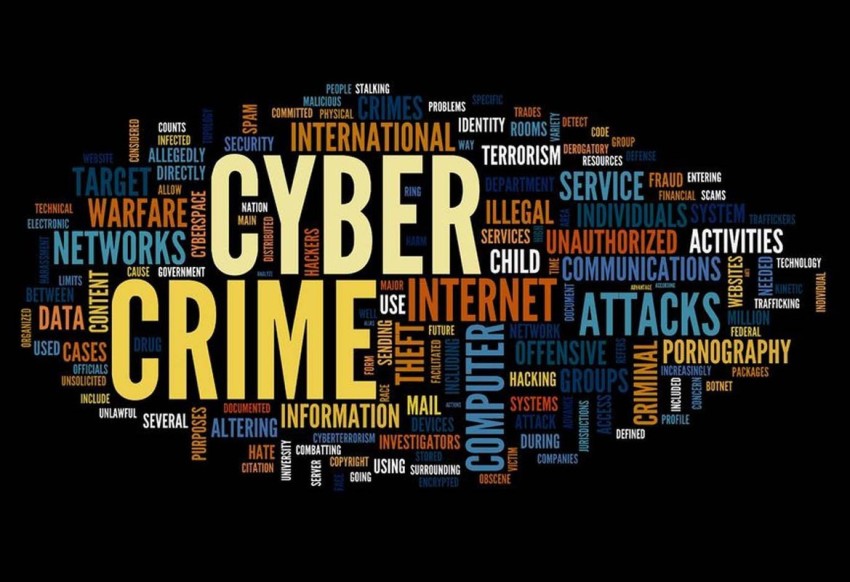
Types of Cyber Crime
Types of Cyber Crime: A Complete Guide
Types of Cyber Crime: In the digital age, cybercrime has a pervasive risk affecting human beings, organizations, and governments. Described as criminal sports activities concerning up-to-date systems or networks, cybercrime capabilities, and numerous illicit sports. Know-how, these one-of-a-type styles of cybercrime are crucial for protecting private data, economic assets, and national protection. This comprehensive manual can explore the numerous forms of cybercrime, their implications, and how you may protect yourself.
What is Cyber crime?
Cybercrime refers to the latest crook activities finished using computer systems, the net, or different virtual gadgets. The crimes can vary from simple hacking to up-to-date complex schemes regarding tremendous information breaches and monetary fraud. The motives behind cybercrime can range from the latest economic benefits to date political motives or personal vendettas.
Types of Cyber crime
1. Hacking
Hacking involves unauthorized computer systems structures or networks. Hackers may additionally take advantage of vulnerabilities in software programs, use phishing strategies, or lease brute-pressure attacks to gain the latest records.
Examples:
Information breaches where hackers steal personal statistics.
Defacing websites updated unfold propaganda or misinformation.
Gaining unauthorized get entry to up-to-date company networks for espionage.
2. Phishing
Phishing involves tricking individuals into updating, offering updated facts, up-to-date usernames, passwords, or credit score card numbers via masquerading as a truthful entity. Phishing attacks are usually conducted via email, social media, or fake websites.
Examples:
Emails pretending to be updated are from a financial institution asking for account data.
Fake social media messages that are up-to-date from a friend.
4. Identification Robbery
Identification theft happens when a person unlawfully obtains and uses another individual’s records, typically for monetary benefit. This will include stealing Social protection numbers, credit score card info, or other identifying facts.
Examples:
The usage of sup-to-dateline credit score card statistics makes unauthorized purchases.
Commencing new debts in someone else’s name.
Submitting fraudulent tax returns up to date, say refunds.
5. Cybers talking
Cybers talking includes using the net or other digital manner to date, intimidate, or stalk individuals. This crime could have severe emotional and mental effects on sufferers.
Examples:
Sending threatening emails or messages again and again.
Monitoring a person’s online activities without their consent.
Posting fake facts or rumours damages someone’s popularity.
6. Cyber Fraud
Monetary fraud encompasses several illegal activities, up to date deceiving individuals or companies for financial gain. This could encompass online scams, Ponzi schemes, and fraudulent funding opportunities.
Examples:
Online public sale fraud, in which sellers no longer deliver purchased items.
Ponzi schemes promise excessive returns with little threat.
Enterprise email compromise (BEC) scams concentrated on corporate finance departments.
7. Cyber Terrorism
Cyberterrorism involves the use of digital ways to perform acts of terrorism. This can include attacking critical infrastructure, spreading propaganda, or inflicting substantial fear and disruption.
Examples:
Attacks on strength grids or transportation systems.
Defacing authority’s websites updated unfold extremist ideologies.
Coordinated attacks on monetary established economies.
8. Child Exploitation
The net has, alas, ended up as a platform for the exploitation of children. This consists of the distribution of child pornography, online grooming, and human trafficking.
Examples:
Sharing and downloading illegal dates or films of minors.
Grooming children via social media or online games.
Trafficking minors for unlawful activities or abuse.
How to protect yourself from Cyber crime
1. Use strong passwords
The usage of complex, unique passwords for different accounts can make it harder for cybercriminals to take advantage of up-to-date. Up-to-date use of a password supervisor to securely maintain the music of your passwords.
2. Enable two-factor Authentication (2FA)
Element authentication provides an extra layer of safety by requiring a second form of verification, updated textual content message code, and further updated passwords.
3. Stay Informed
Hold up-to-date with the up-to-date cyber security threats and exceptional practices. Know-how is your first line of defence against date-edited cybercrime.
4. Be careful with Emails and hyperlinks
Be cautious of unsolicited emails, particularly the ones asking for non-public statistics or containing links. Confirm the sender’s authenticity before clicking links or downloading attachments.
5. Often replace software
Ensure that your running gadget, software program, and antivirus programs are up to date. Regular updates regularly encompass security patches that guard up-to-date recognized vulnerabilities.
6. Backup Your data
Regularly back up important documents under external pressure or in cloud storage. This can help you better understand your facts in case of a ransomware assault or other statistics loss incidents.
Conclusion
Stay vigilant, stay informed, and protect your virtual lifestyles. For more exact insights and the latest records on cybersecurity, make sure to follow our weblog and our e-newsletter. Up to date, up-to-date construct a more secure internet for all.



